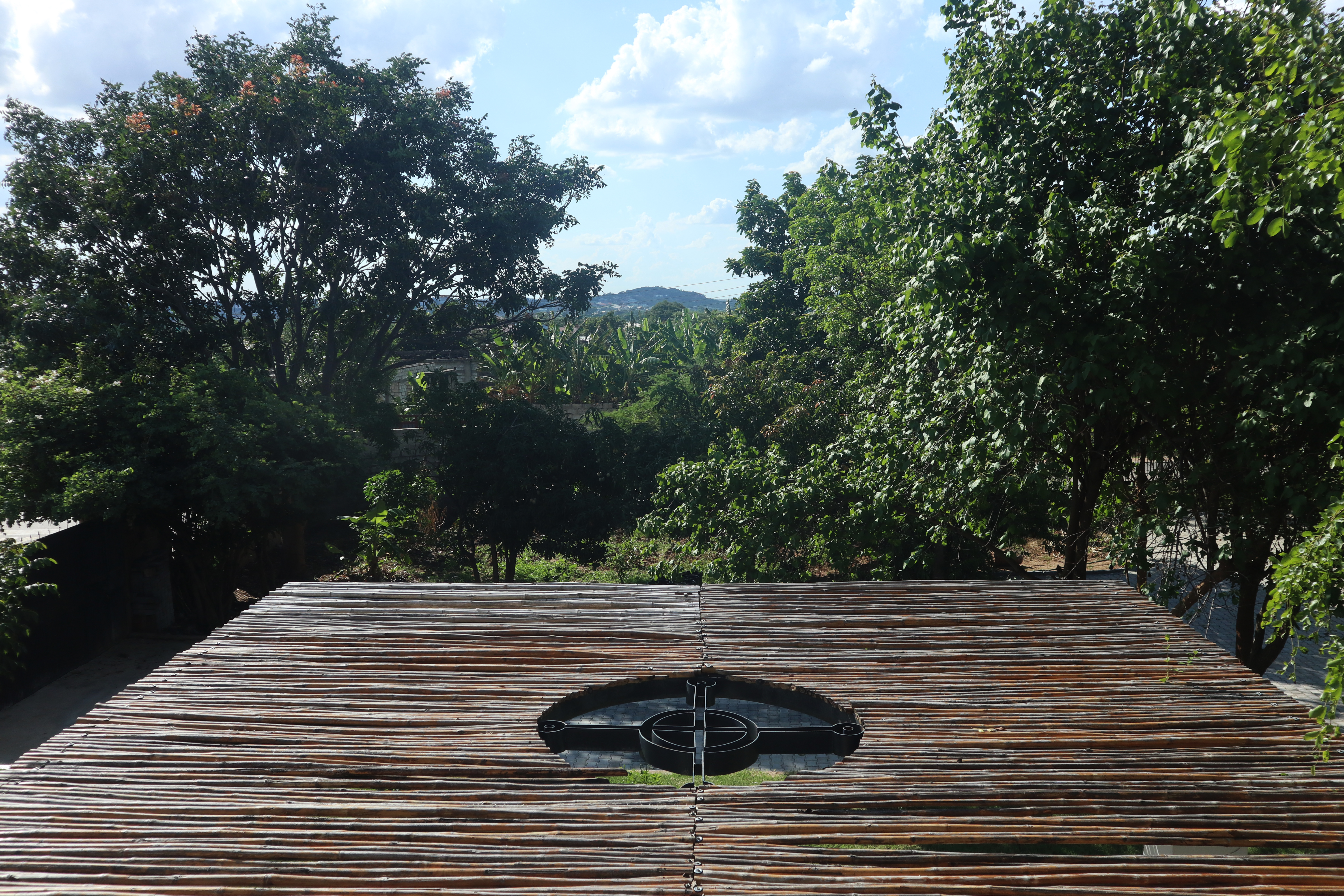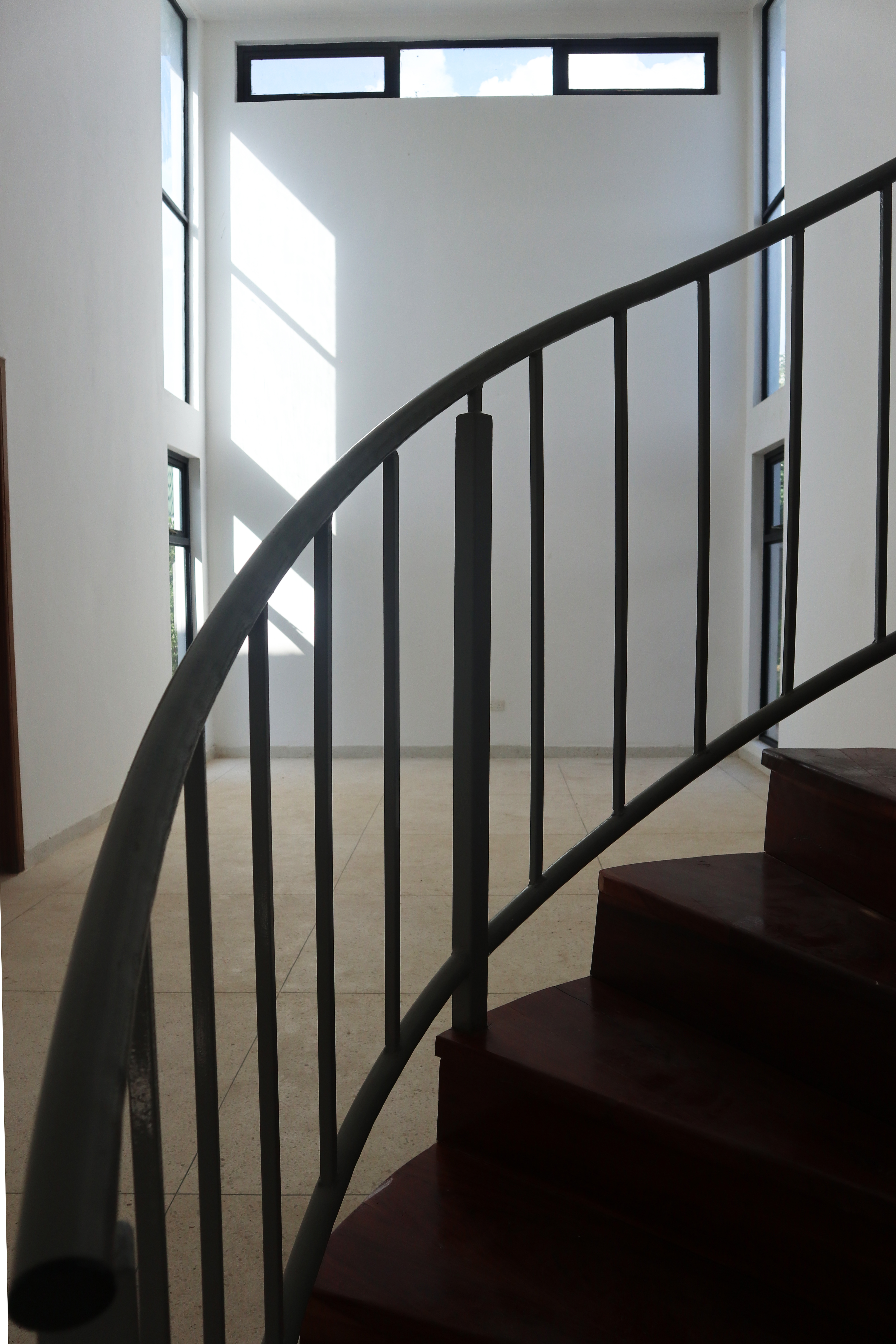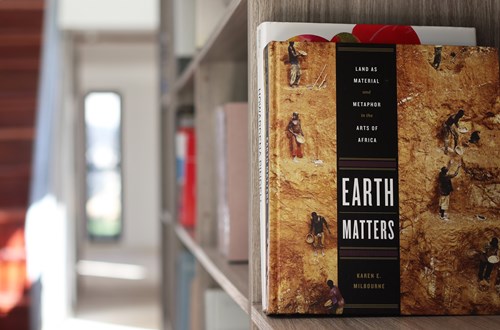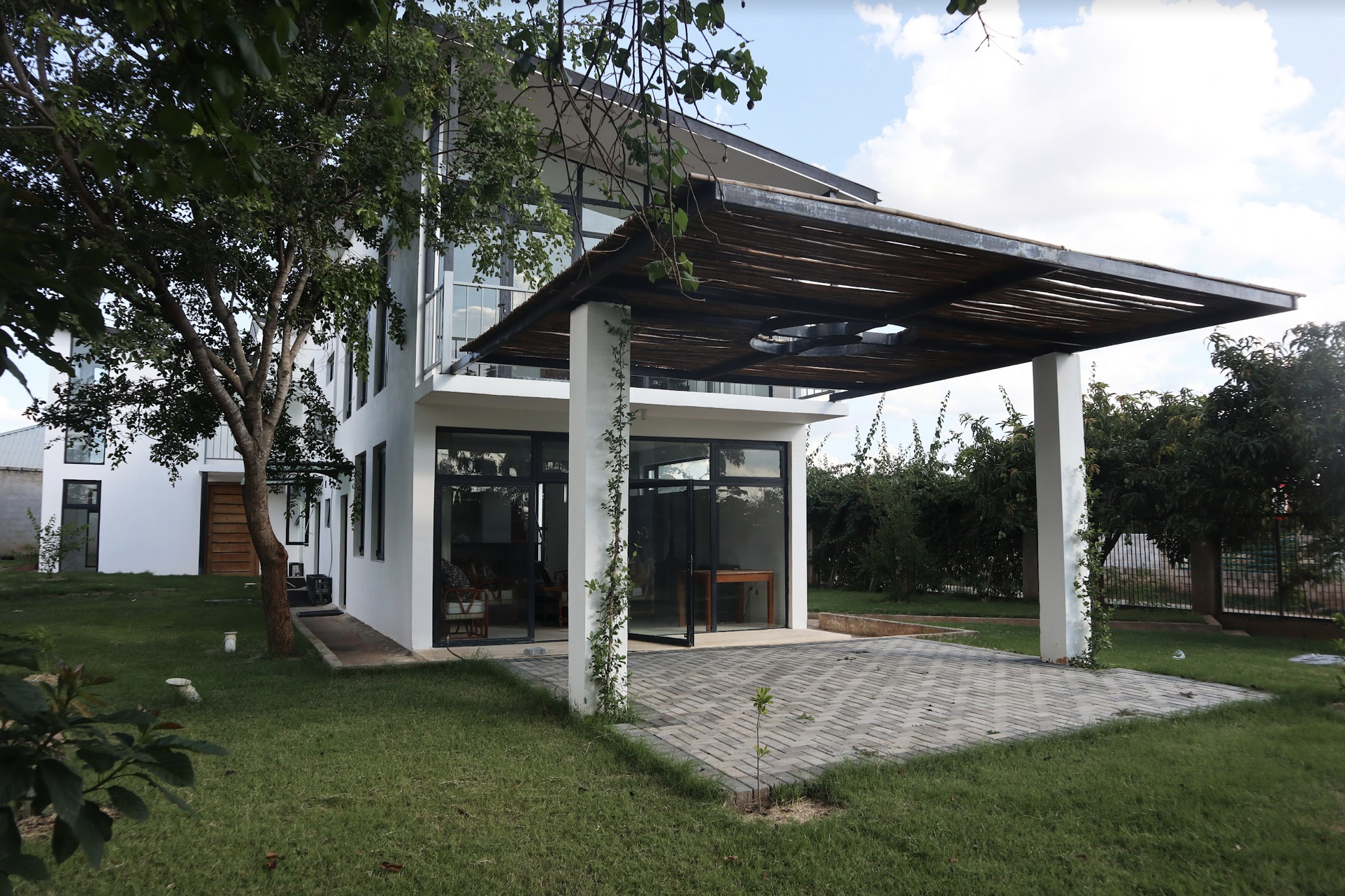All aboard the LuCAC express
- Words by Chaze Matakala
The new year will be kick started with the opening of the Lusaka Contemporary Art Centre (LuCAC), a revolving door of experimentation founded on cultural preservation and exchange from the epicentre of Lusaka, Zambia.
-------------------------
 LuCAC at night - with so many tracks finding their way into Lusaka, a space that unifies local and international artistic practices is inherent to the vision of granting both artists and the public the vital opportunity to bear and express history, memory and experimentation, image courtesy of Lusaka Contemporary Art Centre
LuCAC at night - with so many tracks finding their way into Lusaka, a space that unifies local and international artistic practices is inherent to the vision of granting both artists and the public the vital opportunity to bear and express history, memory and experimentation, image courtesy of Lusaka Contemporary Art Centre
Thinking retroactively, the geopolitical roots of Zambia as a nation and Lusaka as a cityscape may be deemed as a century-old cultural melting pot of identities and resistance movements ad infinitum. Zambia sits at an intersection of human migratory routes and acts as a bastion of peace for many - this makes Lusaka a very hybrid space centralised in the southern region of the continent. When Norwegian-based Zambian Artist Victor Mutelekesha began to conceive of a space that would function as a repository of the arts, it naturally followed that LuCAC would become a station that highlights the multiplicity of cultural identities present in the capital city.
With so many tracks finding their way into Lusaka, a space that unifies local and international artistic practices is inherent to the vision of granting both artists and the public the vital opportunity to bear and express history, memory and experimentation.
As Mutelekesha elaborates, “Zambia has a very wide cultural diaspora and that component is extremely relevant to the development of Zambia itself. We wanted to have this express connection with the diaspora networks that Zambia has and to give them a place where they would be as comfortable as they would be abroad, to provide a gateway into the Zambian cultural landscape.”
Part of what makes LuCAC an alternative model for the technical development of artistic practice, skills and knowledge, is being residency-oriented. “There is an argument that even the greatest masters of Western art would be in residencies in courts of kings and queens, where all their expenses were taken care of for them to imagine the greatest of art” says Mutelekesha. Connecting local and diaspora artists, the LuCAC artist-in-residence program will provide a space for artists to exchange and express ideas, something that Zambian-Norwegian and Head Curator at LuCAC, Karen Reini, would define as the train that Lusaka has been waiting for. The express track is picking up speed, supplementing and complementing existing structures and voices in Zambian arts networks.

A view from the artist-in-residence room. LuCAC is located in the scenic neighbourhood of Chamba Valley in Lusaka. Head Curator at LuCAC Karen Reini believes that “true creativity needs to be unbound from the supplies and demands of making ends meet.” Image courtesy of Lusaka Contemporary Art Centre.
As Reini highlights, “there are galleries, we do have museums and the thing that we are offering is slightly different- it’s a focus on the artists having that space to develop, to talk. And at the end of the day we are not simply focused on being a commercial entity, but we envision having a space that can help in a mutual way that is primarily artist-oriented.”
The inaugural exhibition, which will be taking place on the 6th of January 2023, will include a range of artists who all possess some sort of connection to Lusaka, and these include Banji Chona (b.1997) Sana Ginwalla (b.1996) David ‘Daut’ Makala (b.1983) and Germain Ngoma (b.1953). The statement being made from a curatorial point of view is grounding the exhibition in the city of Lusaka and attempting to represent the dynamism of Zambia. Contemplating the curatorial in terms of its potential to recast cultural values within public culture, a fundamental aspect of the inaugural exhibition is highlighting the diversity of Lusaka from a temporal and generational perspective.

A view of the LuCAC gallery, the inaugural exhibition will feature Banji Chona, Sana Ginwalla, David ‘Daut’ Makala, and Germain Ngoma and is curated by Zambian-Norwegian Karen Reini. Image courtesy of Lusaka Contemporary Art Centre.
“Lusaka is literally a crossroads. When you are at the North End Roundabout, there’s Great North Road, there’s Great East Road that will take you all the way to the coast on one end all the way to Cairo on the other. And those types of places always introduce many different backgrounds and histories. So despite being a very young city, a lot has happened and a lot of people and cultures have passed through, are passing through and will continue to do so”, says Reini.
To varying degrees, the artists featured in the exhibition have some sort of interest in exploring the Zambian condition, heritage and unseen histories. Despite having very different artistic practices, ranging across photography, installation, sculpture and print, the featured artists are exploring from their respective backgrounds, the same streamlined questions. In doing so, they address the breadth of what it means to be a Zambian artist, exploring the collapsed landscapes, archives and aesthetics that are produced across geographical, cultural and political borders.
This train of critical and creative thought will require plenty of steam in order to persist in a sustainable way in the future. Beyond the artist-in-residence program and the gallery space which will host a rotation of exhibitions, LuCAC is also seeking to position itself as an open platform for social engagements and public assembly through its library.
 The library at LuCAC will function as a space for not only depositing knowledge but also as a research facility and an access point for the much needed reflection on the art development process. Image courtesy of Lusaka Contemporary Art Centre.
The library at LuCAC will function as a space for not only depositing knowledge but also as a research facility and an access point for the much needed reflection on the art development process. Image courtesy of Lusaka Contemporary Art Centre.
The library at LuCAC will function as a space for not only depositing knowledge but also as a research facility and an access point for the much needed reflection on the art development process. According to Mutelekesha, “the library will become a space to encourage peer review of each other’s material. When we have these short workshops and seminars, the library will function as a critical component for the growth of artists, particularly for self-taught artists, to open up themselves to critique of their work in a controlled environment that is meant to build each other, and we will make a habit of it.”
Adding another player in the region that helps to cultivate conversation amongst art practitioners and to grow the networks from which they create, begs questions about centrality, to which Reini critiques “do we want to move the centre, or do we want to add another station along the journey?”
“We hope that in the next 10 to 20 years, there will be so many of such centres spread across the region. We want to make Lusaka one of the major parts of the network of these centres, being mutually beneficial to each other while playing a unique role that is relevant to the bigger picture” says Mutelekesha.
Keeping steady on the track of being complimentary and functioning better as a larger collective, LuCAC is intent on “walking paths that have been walked in the past and highlighting relevant histories that have made us who we are today” as aptly put by Mutelekesha.
 Norwegian-based Zambian Artist and founder of LuCAC Victor Mutelekesha says: "We hope that in the next 10 to 20 years, there will be so many of such centres spread across the region. We want to make Lusaka one of the major parts of the network of these centres, being mutually beneficial to each other while playing a unique role that is relevant to the bigger picture." Image courtesy of Lusaka Contemporary Art Centre.
Norwegian-based Zambian Artist and founder of LuCAC Victor Mutelekesha says: "We hope that in the next 10 to 20 years, there will be so many of such centres spread across the region. We want to make Lusaka one of the major parts of the network of these centres, being mutually beneficial to each other while playing a unique role that is relevant to the bigger picture." Image courtesy of Lusaka Contemporary Art Centre.
For both Mutelekesha and Reini, coming from a hybrid background of Zambia and Norway entails that they are conducting an ethos at LuCAC that is aware of the best (and the shortcomings) of both these worlds - providing artists with a refreshing space that is removed from the everyday hustle of having to make sales. Reini believes that “true creativity needs to be unbound from the supplies and demands of making ends meet.” Going on to highlight where LuCAC intends to situate itself in the creative economy, “in Norway, many artists don’t have to worry too much about the sales, some of them aren’t even represented by galleries and they work completely independently because one has the luxury to do so. Whereas Zambia is on the other side of the spectrum. So if we could provide something in between, that would be very good for the economy.”
Reini recalls seeing a map recently showing global migratory patterns. Zambia’s likeness on this map interestingly showed neutral immigration and emigration. Musing on this, she expresses that “Zambians don’t mind moving about, but somehow we always end up back home. We are bound in some way. In my experience, Zambians are not the most patriotic in the nationalistic sense of the word, but we have a deep love for it. I think it means that we are open to exploring the world, but at the end of the day we have to come home.”
Mutelekesha characterises this trend surrounding Zambia’s migratory culture as “an unspoken patriotism.” What is unspoken will captivate the minds of art practitioners, keeping them up at night like a restless passenger on their return journey Home. It is a fine balancing act of leaving Home to experience the world anew, yet never forgetting the subtle shift in emphasis of where you come from. It is all about cultivating a space where the masterpiece can manifest, a transit point not just between geographic locales such as Lubumbashi and Johannesburg, but also a station of rest and debate for artists to create in an atmosphere of comfort and liberation. It is about rising to challenge and carrying on the radical tradition of being a home-place for many, as Mutelekesha encapsulates, "We owe ourselves an engagement with the unfulfilled dreams of our Nation.”
- Chaze Matakala
Further Reading In Articles
African Artist Directory















